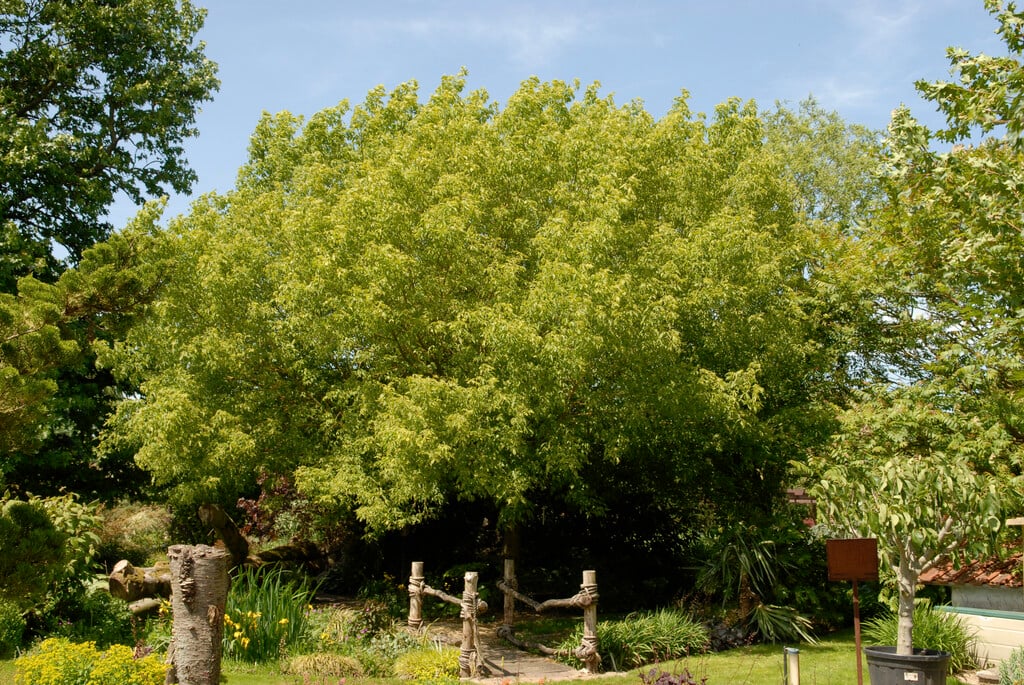Acer negundo 'Aureomarginatum' (v)
A deciduous tree to around 10m high, with pinnate leaves to 20cm long, divided into deep green leaflets, broadly margined with creamy yellow. Thick tassels of greenish-yellow flowers are produced in spring, with male and female flowers borne on separate plants. Leaves turn yellow before dropping in autumn
Size
Ultimate height
8–12 metresTime to ultimate height
10–20 yearsUltimate spread
4–8 metresGrowing conditions
Moisture
Moist but well–drainedpH
Acid, Alkaline, NeutralColour & scent
| Stem | Flower | Foliage | Fruit | |
| Spring | Yellow Green | Green Cream Yellow | ||
|---|---|---|---|---|
| Summer | Green Cream Yellow | |||
| Autumn | Yellow | |||
| Winter |
Position
- Full sun
- Partial shade
Aspect
East–facing or South–facing or West–facing
Exposure
Exposed or Sheltered Hardiness
H6Botanical details
- Family
- Sapindaceae
- Native to GB / Ireland
- No
- Foliage
- Deciduous
- Habit
- Columnar upright, Spreading branched
- Genus
Acer can be deciduous trees or large shrubs with paired, often palmately-lobed leaves and small flowers followed by characteristic winged fruits. Many have fine autumn colour, and some have ornamental stems
- Name status
Accepted
How to grow
Cultivation
Grow in moisture-retentive, well-drained soil in sun or part shade
Propagation
Suggested planting locations and garden types
- Architectural
- City and courtyard gardens
- Cottage and informal garden
- Low Maintenance
Pruning
Minimal pruning required; see pruning group 1. Prune out any reverted shoots, from late autumn to mid-winter only
Pests
May be susceptible to Acer gall mite, aphids, caterpillars and horse chestnut scale
Diseases
May be susceptible to Verticillium wilt, Acer leaf scorch and honey fungus
Get involved
The RHS is the UK’s gardening charity, helping people and plants to grow - nurturing a healthier, happier world, one person and one plant at a time.
